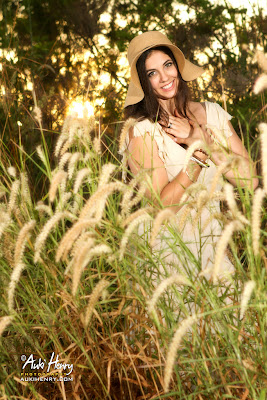Lan Treagus © Auki Henry Photography 2012
 |
| Lan Treagus back in the Studio |
Model: Lan Treagus
Photographer: Auki Henry
Location: Darwin, NT, Australia
Date: April 2012
Lens: Canon EF 70-200mm f/2.8 L
Lan Treagus © Auki Henry Photography 2012
 |
| Lan Treagus back in the Studio |
Model: Lan Treagus
Photographer: Auki Henry
Location: Darwin, NT, Australia
Date: April 2012
The Angus Henry Chronicles - Part II | Sgraffito
This is the second part of the series, Angus Henry Chronicles, the interview deals with Sgraffito (sometimes scraffito), this excerpt of its meaning is taken from wikipedia.
"Another use of scraffito is seen in its simplified painting technique. One coat of paint is left to dry on a canvas or sheet of paper. Another coat of a different color is painted on top of the first layer. The artist then uses a palette knife or oil stick to scratch out a design, leaving behind an image in the color of the first coat of paint. Sometimes a first coat of paint is not needed and the wet coat scraped back reveals the canvas. This technique is often used in art classes to teach the scraffito technique to novice art students."
 |
| "The Cricketer" was an early general exercise piece to convey some variety of flesh and materials |
 | |
|
 |
| "Portrait of a Man" this is Maurice Chevalier, the work is taken from a photograph, the exercise was to translate a grey, blotty photo into a crisp, attractive likeness. |
Once mastered is it more or less time consuming than painting ?
The Angus Henry Chronicles - Part I | Oils
This is the first of a series of interviews done with my father Angus Henry. The series was first published in 2008 for the art site grandinferno.net as a feature for their contemporary art audience, it briefly detailed his history and experiences being raised in an artistically inclined family and shows some examples of his formal education in the classical graphic art disciplines of the era. Angus Henry was born in 1934 in Uddingston, Scotland to Bill and Maud Henry. Bill being an artist himself and also a theatre producer and Maude being one of Britains leading ladies of the theatre of the day, my father found himself growing up in a creative environment. Educated at the prestigious Hamilton Academy during his younger years he received a hard, intensive and thorough education before continuing on to the Glasgow School of Art from 1951 to 1955 graduating with a 4 year Diploma in Graphic Art (honours equivalent). From this Angus went on to Jordanhill and West of Scotland Teachers College for the Secondary Graduate Teacher's Certificate to impart his art knowledge to others. The first 2 years at art school were generalist art studies, which by todays educational standards would be considered quite intensive. Studies included drawing, painting, sculpture, modelling, architecture, history of costume, history of design, history of art, life drawing, silversmithing & jewellery, bookbinding, weaving etc. The last two years were specialised in areas relevant to the qualification. Angus did Commercial and Graphic as it was the only one which required a high level pass in both design and craft skills AND in fine arts (I.e. drawing and painting); the course consisted of life drawing (compulsory all through art school), lettering, auto-lithography, hand type-setting, flat-bed printing, and all aspects of basic advertising and promotional design involving fine hand lettering, posters, labels, book jackets, advertisements, magazine illustrations, scraperboard, screen printing, linocutting, material montage, etc. In this, the first installment of my father's work I have chosen 3 of his earliest oil paintings, created at the age of 17. This brief interview highlights some of the main points of interest behind these paintings. Click Images to Enlarge


Maddison Ash © Auki Henry Photography 2011
 |
| Maddison @ The Vodka Bar |
Model: Maddison Ash
Photographer: Auki Henry
Location: Darwin, NT, Australia
Date: November 2011
Noni Abraham © 2012 Auki Henry
 |
| Noni Abraham, Sunset at Lee Point Beach - Darwin, Australia |
Model: Noni Abraham
Photographer: Auki Henry
Location: Darwin, NT, Australia
Date: April 2012
Noni Abraham © 2012 Auki Henry
 |
| Noni Abraham Darwin Sunrise |
Model: Noni Abraham
Photographer: Auki Henry
Location: Darwin, NT, Australia
Date: April 2012
Auki © 2012
 |
| Noni Abraham © 2012 Auki Henry |
Model: Noni Abraham
Photographer: Auki Henry
Location: Darwin, NT, Australia
Date: April 2012
Auki © 2012 .
 |
| Mel Bridge |
Model: Mel Bridge
Photographer: Auki Henry
Location: Darwin, NT, Australia
Date: April 2012
Auki © 2012
 |
| Mel Bridge © Auki Henry Photography 2012 |
Model: Mel Bridge
Photographer: Auki Henry
Location: Darwin, NT, Australia
Date: April 2012
Auki © 2012
 |
| Evolution Apartments HDR - Darwin, Australia © Auki Henry Photography 2012 |
Subject: Darwin Evolution Apartment Building - HDR
Photographer: Auki Henry
Location: Darwin, NT, Australia
Date: April 2012
Auki © 2012
 |
| Asher De Rouffignac © Auki Henry Photography 2012 |
Model: Asher De Rouffignac
Photographer: Auki Henry
Location: Darwin, NT, Australia
Date: March 2012
Auki © 2012
 |
| Asher De Rouffignac © Auki Henry Photography 2012 |
Model: Asher De Rouffignac
Photographer: Auki Henry
Location: Darwin, NT, Australia
Date: March 2012
Auki © 2012
 |
| Asher De Rouffignac © Auki Henry Photography 2012 |
Model: Asher De Rouffignac
Photographer: Auki Henry
Location: Darwin, NT, Australia
Date: March 2012
Auki © 2012
 |
| Waterfront Precinct HDR - Darwin, Australia © Auki Henry Photography 2012 |
Subject: Darwin Waterfront Precinct - HDR
Photographer: Auki Henry
Location: Darwin, NT, Australia
Date: April 2012
Auki © 2012
 |
| Full Moon in Darwin, Australia © Auki Henry Photography 2012 |
Subject: A Darwin Moon
Photographer: Auki Henry
Location: Darwin, NT, Australia
Date: April 2012